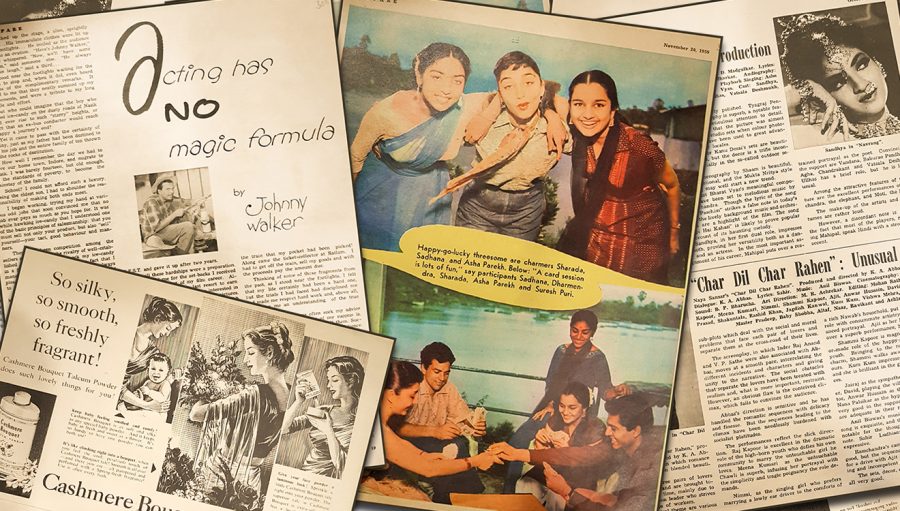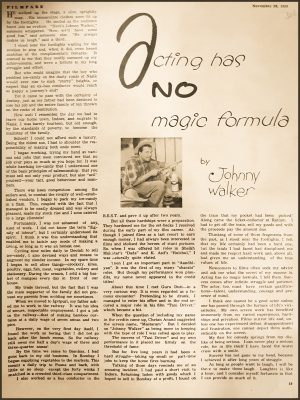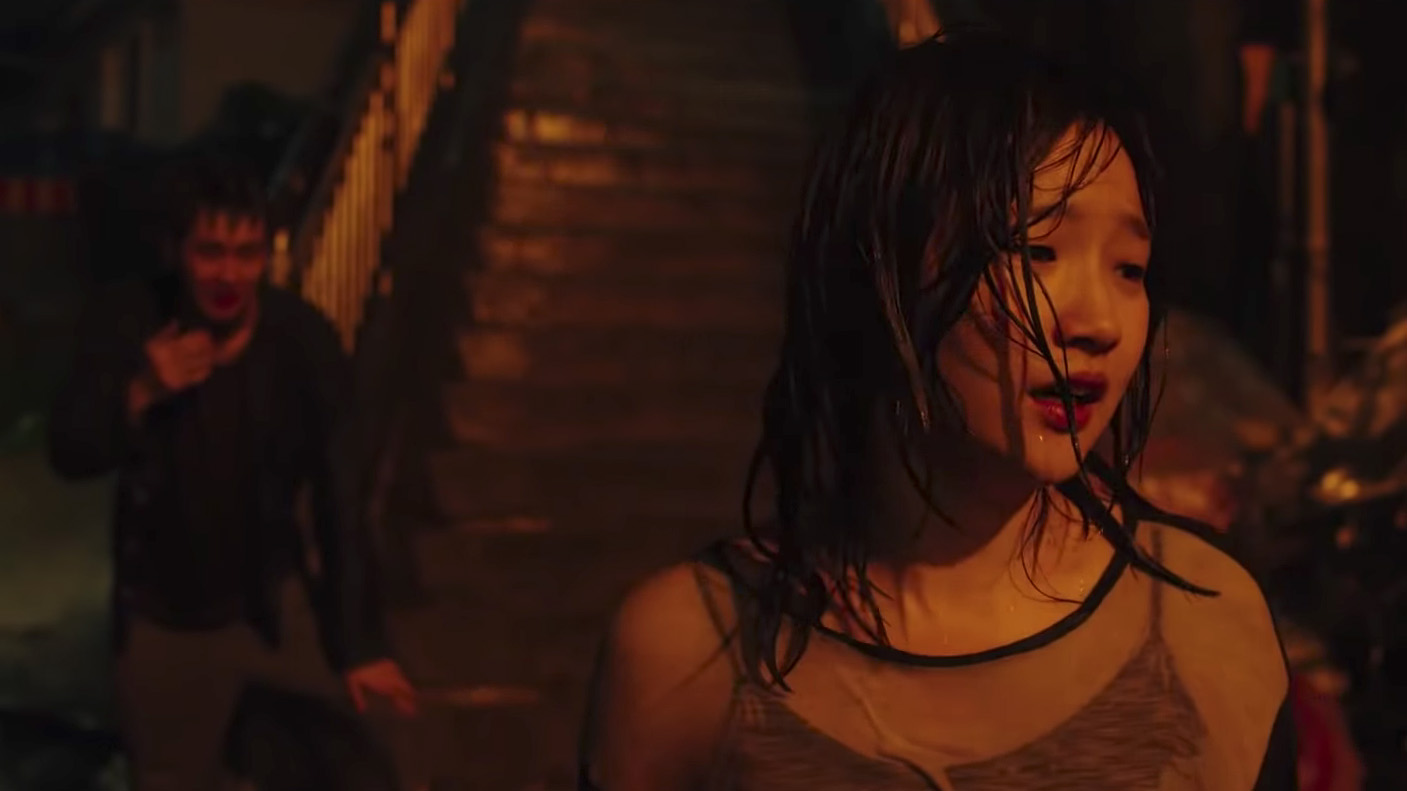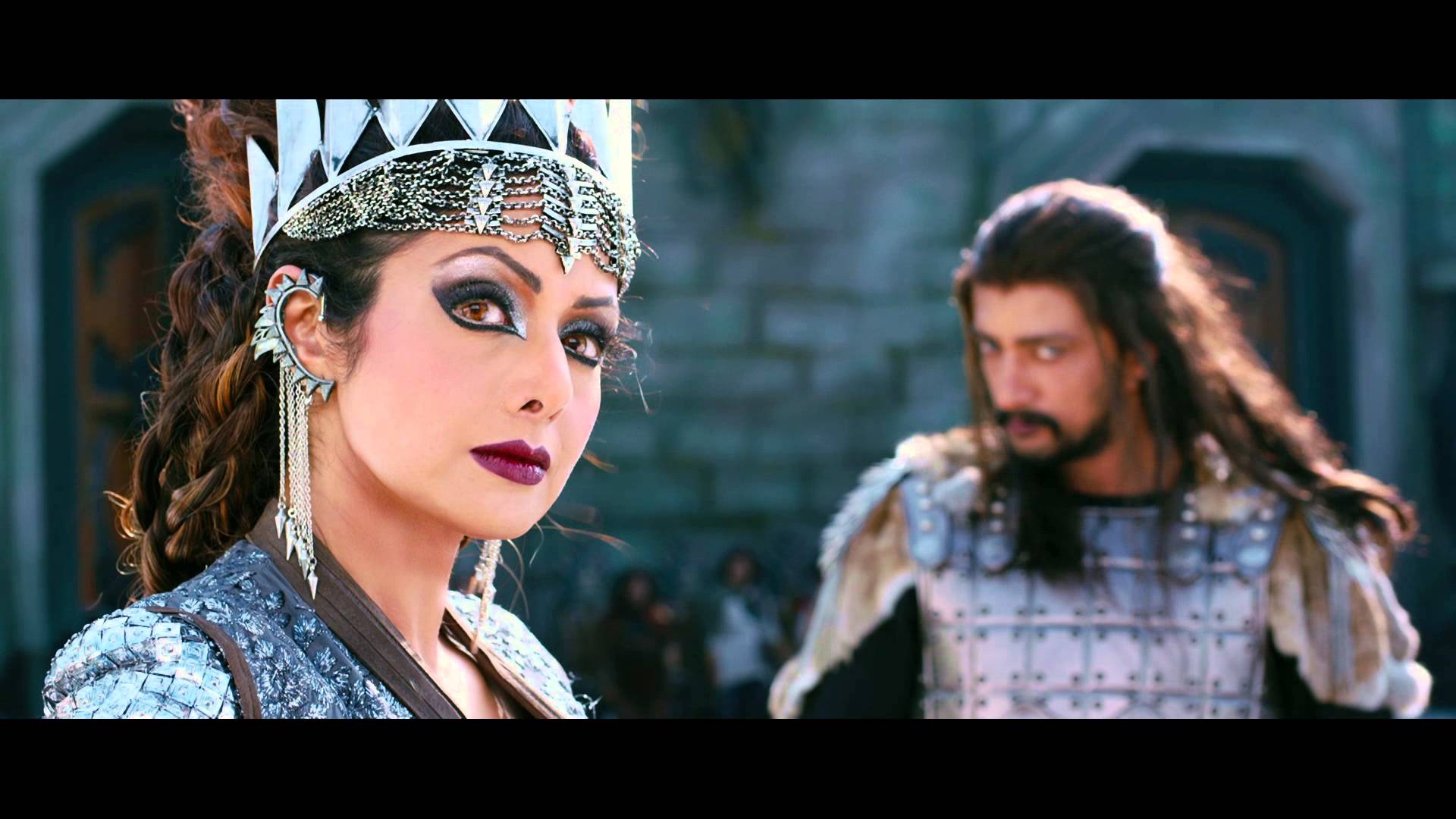Recently, I stumbled upon a tiny book store – worthy of an Instagram post – tucked away in one of the busiest areas in Chennai. ‘Rare Book Store’ is run by an elderly person, who has been collecting books and magazines for years. Much of his collection includes cinema magazines and cut-outs of various articles from the bygone eras.
While most of the books are either stacked on the table (or floor), some spill out of not-so-rigid shelves. But, neatly ironed and placed within a laminated file are editions of Bollywood’s Filmfare magazine from the ’50s and ’60s.
Preserved and exuding the RGB colour model, the vintage magazine would easily fetch Rs 500 online, I hear. One of the editions feature a mini photoshoot of Bollywood’s top stars – Dharmendra, Asha Parekh, Sadhana, Sharada, and Suresh Puri. Playing cards on a deck by a lake, the stars seem to be engaged in some light banter, in looks that scream of a time gone by – high-waisted pants, winged eye-liners, red lipstick, side ponytails, and a whole lot of sass that one would find on a regular youngster back in those times.
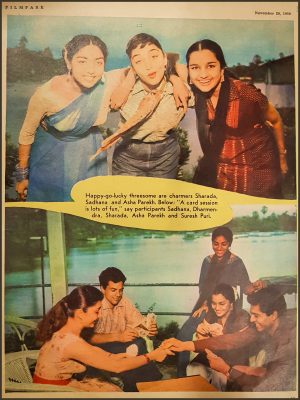
*****
The magazine has movie reviews, something that artistes now dread. In Filmfare‘s October 9, 1959’s issue, the magazine reviews two films – Navrang and Char Dil Char Rahen.
The reviewers (whose names aren’t mentioned) write what worked and what didn’t work for them in all honesty. There’s no sycophancy or deliberate negative statements flung around.
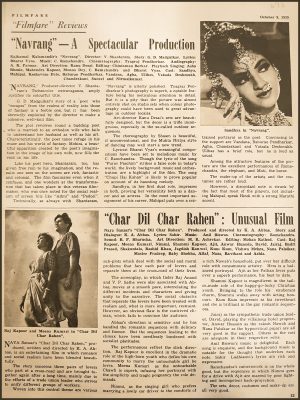
filmfare sepia border4
Navrang is about a poet who “escapes” from reality into a feeble fantasy. The budding poet is married to a relatively orthodox wife who fails to understand her husband and his art. Starring the director’s wife herself, Sandhya, the film has sets beautifully designed by Kanu Desai and songs sung by Asha Bhosle, Mahendra Kapoor and Manna Dey.
“Technically, as always with Shantaram, Navrang is utterly polished. Tyagraj Pendharkar’s photography is super, a notable feature being his meticulous attention to detail. But it is a pity that the picture was almost entirely shot on studio sets when colour photography could have been used to great advantage in outdoor locales,” writes the author.
Char Dil Char Rahen‘s review is given a headline that simply drives home the point even before you read – “Unusual Film”. Starring Raj Kapoor, Meena Kumari, Nimmi, Shammi Kapoor, Ajit, and others, the film is about three pairs of lovers who part at a cross-road and are brought together again after a long time. Peering into the lives of trade union workers, the film blends romance and social realism, with songs by Anil Biswas.
Without digging too deep, the reviewer praises and points out the film’s shortcomings and whatnot in half a page.
“The performances reflect the slick direction. Raj Kapoor is excellent in the dramatic role of the high-born youth who defies his own community to marry the untouchable girl he loves. Meena Kumari as the untouchable Chawli is superb, infusing her portrayal with the simplicity and tragic poignancy the role demands. Anil Biswas’ music is delightful, and Sahir Ludhianvi’s lyrics are rich and expressive,” the author writes.
*****
The magazine also has a page written by a celebrity. In Filmfare‘s November 20, 1959’s issue, the celebrity is funny man Johnny Walker writing on acting. His article is about how, despite his severely modest background, he had to rough it out to try acting. He also recalls that his screen name was supposed to be “Mastaram” once.
“When the question of including my name in the credits (Guru Dutt’s Taxi Driver) came up, Chetan Anand suggested the screen name, “Mastaram”. But I decided on “Johnny Walker” as being more in keeping with the type of role I was called upon to play,” he writes.
Highlighting everything from under the sun, Walker also writes on what makes a good actor.
Recommended
“I think one cannot be a good actor unless one has passed through the furnace of life’s vicissitudes. My own screen work has benefited immensely from my varied experiences, hardships and privation. Films mirror life and, unless one has experienced defeat, disappointment and frustration, one cannot depict them authentically on the screen.”
Walker then concludes his heartfelt autobiographic essay with:
“As long as people want to laugh, I will be there to make them laugh. Laughter is like a tonic, and I consider myself fortunate in that I can provide so much of it.”
His last movie was Kamal Haasan’s Chachi 420 in 1997. Unlike his frequent portrayals – as that of a drunkard – he was actually a teetotaler in real life. He died in 2003.
*****
